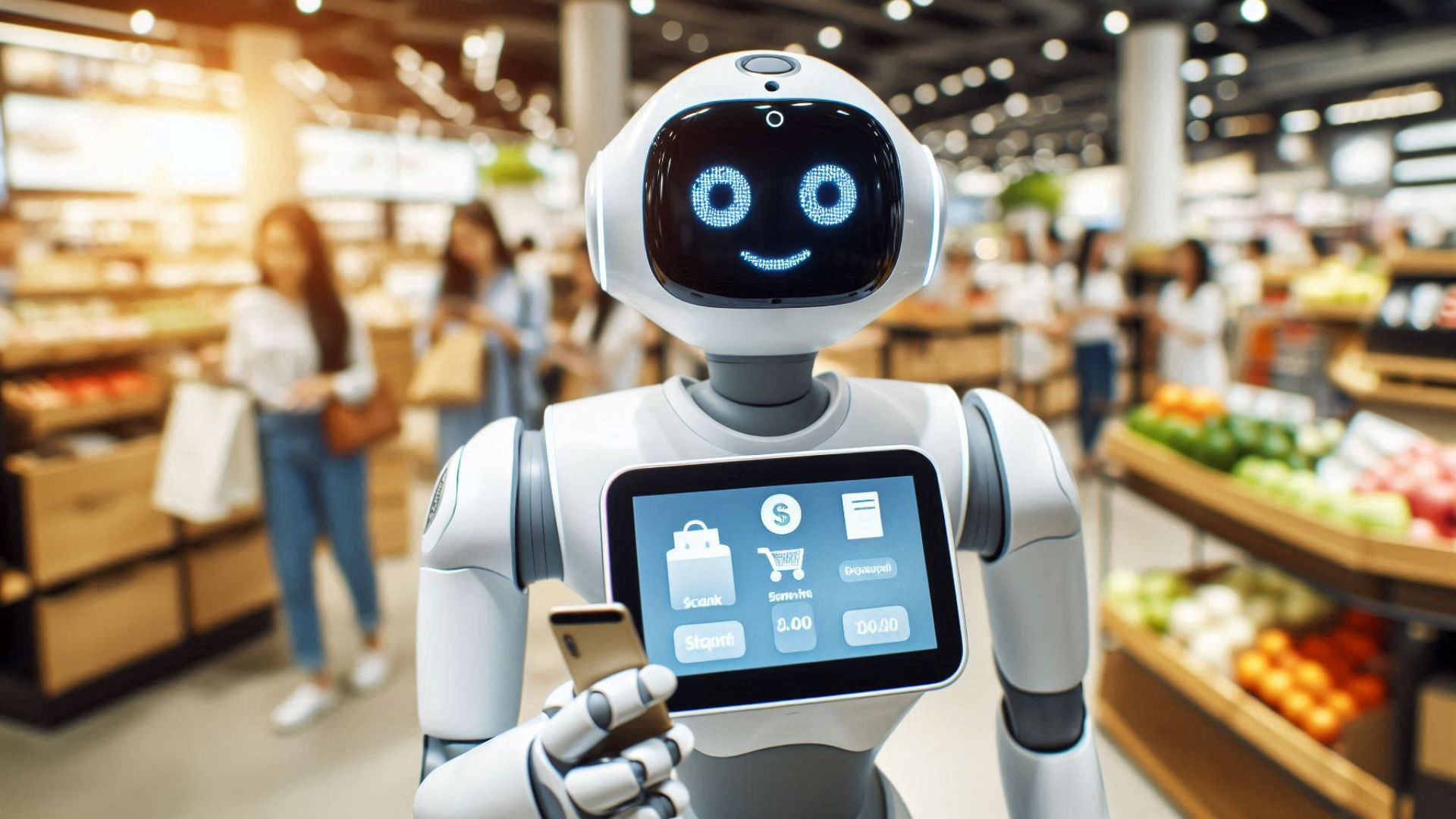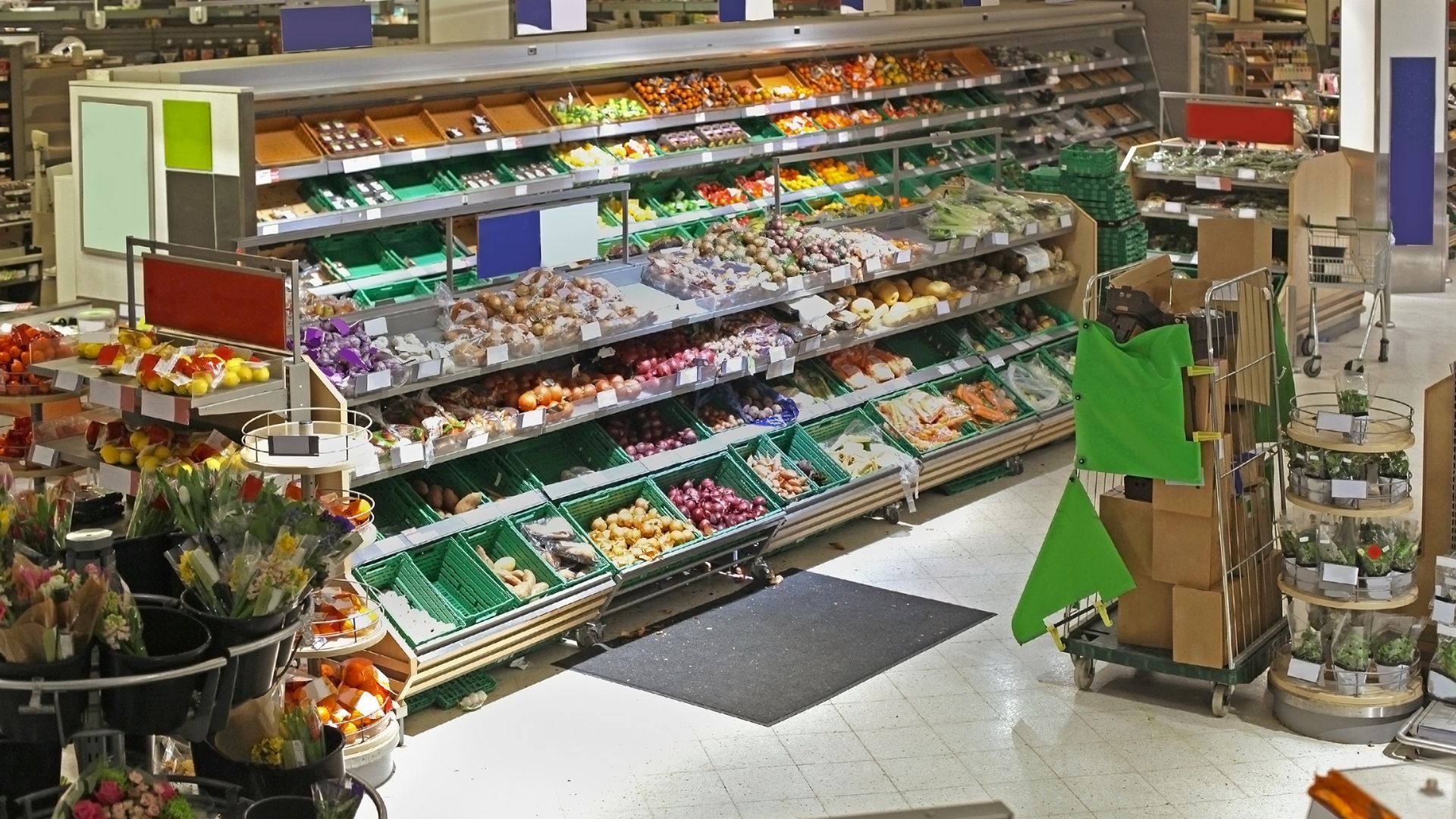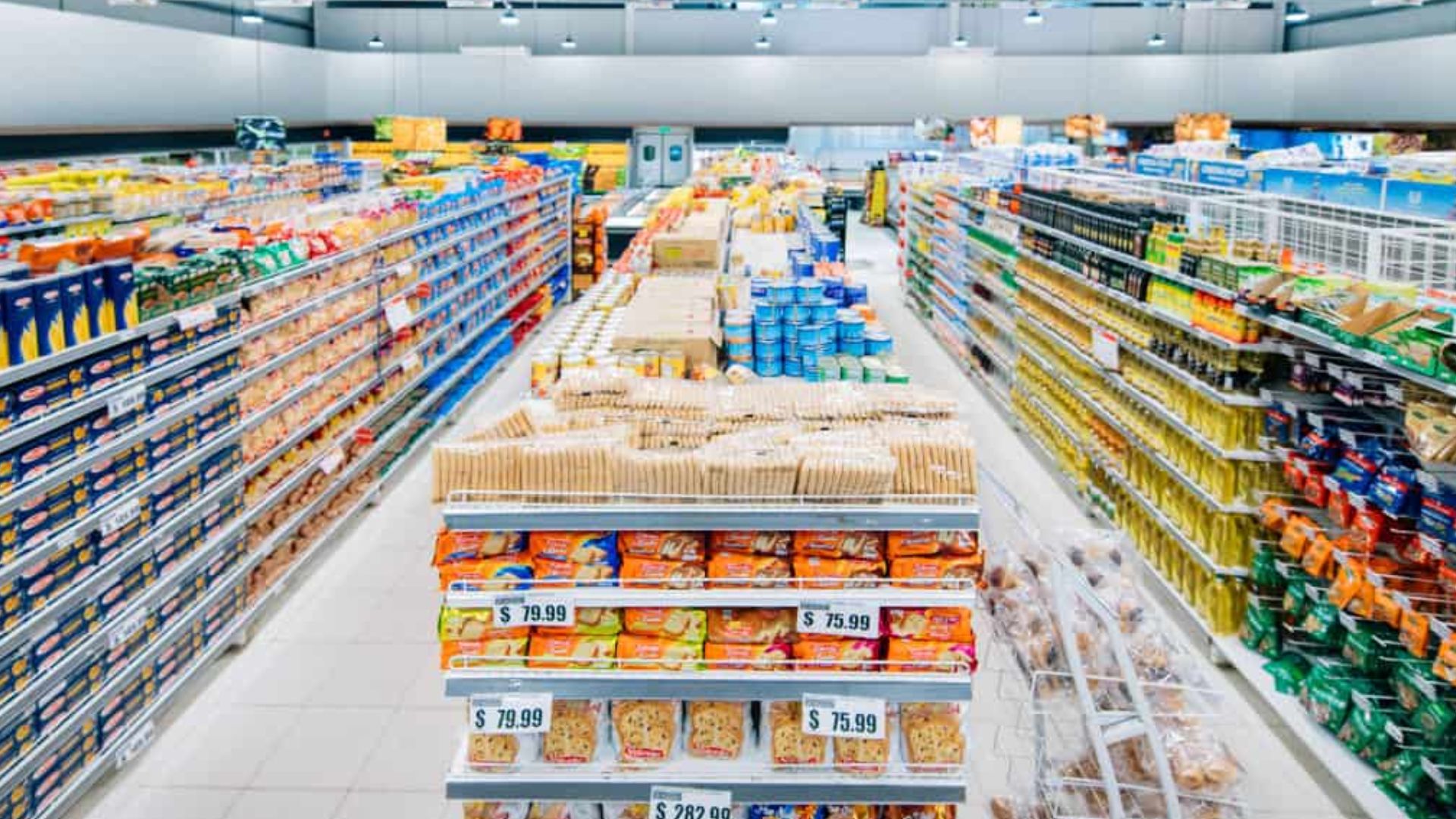AI is transforming the retail landscape, bringing new opportunities and challenges for Consumer Packaged Goods (CPG) brands. According to a McKinsey report, AI adoption could increase productivity in the retail and CPG industries by 1.2 to 2.0 percent of annual revenues, equating to an additional $400 billion to $660 billion in value. As the market shifts toward more data-driven, personalized, and efficient operations, CPG brands are at the forefront of this transformation.
For CPG leaders, integrating AI into their digital transformation strategies is a necessity not only in the online landscape but also revolutionizing physical retail, making it a holistic omnichannel adoption From optimizing on-shelf availability to enhancing in-store shopping experiences, AI is unlocking previously unimaginable potential. The ability to adapt to these technologies is crucial for maintaining a competitive edge in today’s rapidly evolving market.
In this article, we will explore how AI is reshaping retail value chains and the specific ways CPG brands can harness its power to stay competitive in an increasingly complex market.
Shifting from Traditional Models to AI-Driven Solutions
In the traditional model, CPG brands relied on linear value chains: product manufacturing, distribution, retail, and ultimately, consumer purchase. While this process was effective in the past, it had limited visibility and adaptability, making it difficult for brands to respond quickly to changing consumer behavior, stock levels, or market demands.
For instance, one such arena is manual audits to track retail execution. Historically, CPG brands would depend on manual audits, scheduled inventory checks, and long lead times for reporting. With data often arriving in monthly or quarterly reports, decision-making was slow and often reactive.
However, with the advent of AI and constant real-time data updates, the value chain for CPG brands has shifted. Now, brands can monitor and adjust their operations dynamically, responding to consumer needs and market shifts almost instantaneously.
The rise of technologies like IoT, computer vision, machine learning, and data analytics has enabled brands to integrate AI-driven processes throughout their value chains—from manufacturing to retail, ensuring they remain agile and responsive.
Also read: The Role of Retail AI Technology in Building a Modern Retail
Technologies Deployed in AI for CPG Brands
As CPG brands shift from traditional models to AI-driven solutions, using the right technologies is key for perfect store execution. These technologies help automate processes, enhance decision-making, and provide real-time insights into various aspects of the business. Here are some of the most common AI technologies used by CPG brands today:
- Data Management Systems
AI-powered data management systems help CPG brands organize and store vast amounts of consumer, product, and sales data. This enables more efficient access and analysis, driving data-informed decisions for better business outcomes. - Big Data and Predictive Analytics
Big data platforms, paired with predictive analytics, allow CPG brands to analyze historical data and forecast consumer behavior. By predicting demand fluctuations, CPGs can optimize inventory management, pricing strategies, and product launches. - Machine Learning (ML)
ML algorithms help CPG brands analyze patterns in data, enabling more accurate predictions about market trends, customer preferences, and product performance. This leads to smarter decisions about product assortment, marketing strategies, and supply chain management. - Natural Language Processing (NLP)
NLP is used in AI-driven chatbots and virtual assistants to enhance customer interactions by understanding and responding to queries. For CPG brands, this technology improves customer support and enhances consumer engagement across various channels. - Computer Vision
CPG brands use computer vision to analyze visual data, such as shelf images, to monitor product placement, planogram compliance, and in-store promotions. This technology ensures products are displayed optimally and available when needed, leading to better retail execution. - Robotic Process Automation (RPA)
RPA helps automate repetitive tasks such as data entry, invoicing, and order processing. This enables CPG brands to streamline operations and free up valuable human resources for more complex, strategic tasks. - Internet of Things (IoT)
IoT devices and sensors gather real-time data on inventory levels, product movements, and customer behavior. This data allows CPG brands to optimize supply chain operations, monitor in-store conditions, and personalize the customer experience.
These technologies are essential for CPG brands looking to streamline their operations, enhance their understanding of consumer behavior, and improve on-shelf product availability and customer satisfaction. By incorporating these AI technologies, CPG brands can remain competitive and adapt to changing market conditions.
Now that we've covered the technologies driving AI in CPG operations, let’s explore why implementing these AI technologies is so important for the ongoing transformation of CPG brands.
Importance of Using AI Technologies for Retail Transformation in CPGs
The rise of AI has brought about transformative benefits for CPG brands. By integrating AI into their retail operations, CPG companies can gain critical advantages that improve efficiency, speed up product development, and create more personalized experiences for their consumers. Here are some key benefits CPG brands can expect by adopting AI technologies:
- Enhanced Customer Engagement: AI enables brands to offer highly personalized experiences by analyzing consumer behavior and preferences. This helps create tailored product recommendations, boosting customer satisfaction and fostering brand loyalty.
- Optimized Marketing Strategies: AI-driven tools allow CPG brands to refine their marketing strategies by analyzing customer data and campaign performance. This leads to more effective advertising, better targeting, and improved ROI.
- Accelerated Product Development: By predicting consumer trends and preferences, AI allows brands to innovate quickly and meet market demand. This not only helps create products that resonate with consumers but also shortens the time to market.
- Optimized in-Store Retail Execution: Using Image Recognition has proved beneficial in monitoring in-store retail execution implementation and reporting gaps in real-time. This helps sales leaders fix issues instantly and make impactful decisions that boost per-store sales and in-store brand visibility.
- Improved Supply Chain and Inventory Management: AI systems study and predict demand fluctuations, helping CPG brands manage inventory better, reduce stockouts, and optimize distribution.
- Data-Driven Decision Making: AI processes vast amounts of consumer and operational data to provide actionable insights, improving strategic decisions across marketing, sales, and supply chain management.
These benefits demonstrate the vast potential AI holds for CPG brands looking to optimize their operations and build deeper connections with their consumers. By embracing AI technologies, CPG leaders can not only improve efficiency but also drive innovation and better meet market demands.
With these advantages in mind, let’s now look at the top cases of AI for CPG Brands and how these technologies are reshaping various aspects of their operations.
Top Use Cases of AI for CPG Brands
AI is transforming various aspects of operations for CPG brands, providing new opportunities to boost efficiency, improve customer experiences, and streamline supply chains. By adopting AI, CPG brands can gain a competitive edge, improve operational performance, and stay ahead of consumer demands. Here are some of the most impactful ways AI is reshaping CPG operations:
AI-Driven Customer Insights and Personalization
AI is radically changing how CPG brands interact with their customers. By analyzing data like past purchase history and browsing habits, AI helps brands offer personalized recommendations that resonate with each individual consumer. For example, Coca-Cola uses AI to drive personalized marketing campaigns, increasing customer engagement and promoting relevant products at the right time.
AI enables brands to understand shifting preferences, which helps them stay ahead of the competition. AI has been implemented by Unilever as well, to refine its marketing strategies for product shoots and to accelerate the need for faster content creation.
These AI-driven insights not only help enhance customer engagement but also drive higher sales by making the shopping experience more relevant. CPG brands can tailor product recommendations, promotions, and messaging to meet each consumer's unique needs, ensuring a stronger connection between the brand and the consumer.
On-shelf Assortment Planning and Operational Efficiency
Staying ahead of demand is a critical challenge for CPG brands, especially when trying to balance stock levels and meet customer expectations. AI tools are empowering brands like PepsiCo and Unilever to predict demand more accurately by analyzing historical data and external market conditions.
With AI, brands can avoid stockouts and overstocking, ensuring that the right products are available at the right time. AI-driven predictive models help streamline supply chains, optimize delivery routes, and reduce inventory costs.
For instance, PepsiCo uses AI to not only analyze past sales data and predict trends but also to reformulate products like Lay’s potato chips. Using generative AI models, PepsiCo evaluates various ingredients and their combinations to create healthier snack options with reduced salt and fat content while maintaining the same great taste that consumers love. This innovation ensures that PepsiCo can meet the growing consumer demand for healthier products without compromising on flavor and also helps optimize their supply chain based on evolving market needs
On-shelf Inventory Monitoring and Merchandising
AI is taking inventory management to the next level by automating processes and ensuring better product visibility. Brands like Procter & Gamble (P&G) use AI-powered systems to monitor stock levels and make real-time adjustments based on demand shifts. These systems allow brands to track on-shelf availability and planogram compliance across multiple retail locations, ensuring that products are properly displayed and available when needed.
For example, P&G has adopted AI to track product placement in stores and ensure that it aligns with planogram standards. This approach improves inventory management and enhances the customer shopping experience by making sure products are always in stock and correctly positioned on shelves (P&G AI Inventory Management).
As CPG brands strive to integrate AI technologies, they must overcome several hurdles to fully unlock their potential. In the next section, we'll explore the common challenges CPGs face in implementing AI and discuss how to overcome these obstacles for successful AI adoption in retail.
Challenges CPGs Face in Implementing AI in Retail
While integrating AI into retail operations offers significant benefits for CPG brands, several challenges can impede successful implementation. Understanding these obstacles is crucial for developing effective strategies. Here are some of the primary challenges:
1. Data Quality and Integration Issues
CPG brands often struggle with fragmented data sources, making it difficult to harness comprehensive insights. The lack of a unified data infrastructure can hinder AI system integration and limit its effectiveness.
2. Shortage of Skilled AI Talent
There's a notable scarcity of professionals proficient in AI and machine learning within the retail sector. This talent gap poses challenges in developing, implementing, and maintaining AI solutions tailored to the unique needs of CPG brands.
3. High Implementation Costs
Deploying AI technologies requires significant investment in infrastructure, software, and training. For many CPG brands, especially smaller enterprises, these costs can be a substantial barrier to AI adoption.
4. Data Privacy and Ethical Concerns
Utilizing consumer data for AI-driven insights raises privacy issues and ethical questions. Careful handling of data is necessary to ensure compliance with regulations and maintain consumer trust.
5. Resistance to Change Within Organizations
Employees may be apprehensive about AI adoption due to fears of job displacement or a lack of understanding of the technology's benefits. Overcoming this resistance requires clear communication and inclusive strategies.
Addressing these challenges is essential for CPG brands aiming to leverage AI effectively in retail. By proactively tackling these issues, brands can unlock AI's full potential to enhance operations and shoppers’ experiences.
Looking ahead, it's important to explore the future trends and innovations in AI that are set to transform the retail landscape further. Let's explore these developments to understand how they will shape the industry.
Future Trends and Innovations in AI Retail
The future of AI in retail is full of exciting opportunities for CPG brands. As AI continues to evolve, innovations like augmented reality and voice recognition are set to reshape how brands connect with customers. These advancements will allow CPG brands to provide even more interactive and customized shopping experiences, keeping customers engaged and loyal.
Another breakthrough on the horizon is generative AI. This technology has the potential to revolutionize product design, marketing strategies, and customer interactions. With generative AI, CPG brands can explore new ways to create products and campaigns that stand out in a crowded market, offering something truly unique to consumers.
Additionally, AI-powered visual search and hyper-personalized promotions are becoming increasingly important. These tools will enable CPG brands to deliver more relevant product recommendations and promotions tailored to each customer’s preferences.
Also read: Future of Automation in Retail: Efficiency and Customer Satisfaction
This brings us to how ParallelDots can help CPG brands stay ahead in the evolving retail landscape by providing cutting-edge AI-powered solutions for shelf management, inventory tracking, and real-time data analytics.
How ParallelDots’ Technology Can Help CPGs Stay Ahead in Retail AI
ParallelDots offers a range of cutting-edge AI-driven solutions specifically designed to help CPG brands optimize their operations and stay competitive in the evolving retail landscape. Here are the key features that enable CPG brands to stay ahead:
1. Real-Time Photo Capture and Instant Feedback
ParallelDots' ShelfWatch app allows CPG brands to capture images of retail shelves and receive real-time insights into key performance indicators like on-shelf stock levels, planogram compliance, and promotional execution.
With features like on-device blur, glare, and angle detection, ShelfWatch ensures high-quality images are captured at the point of capture, reducing the number of rejected images and providing more accurate data. This ability to work offline makes it easier for field reps to collect data, even in areas with no internet connectivity.
2. Planogram Compliance and Product Recognition
Using advanced deep learning algorithms, ParallelDots achieves 95%+ accuracy in product recognition, even in challenging conditions like occlusions, rotated products, or low-light environments. This ensures that CPG brands can consistently track planogram compliance and monitor their product visibility on the shelves. Moreover, ShelfWatch can also track POSM (Point of Sale Materials) and POP (Point of Purchase) compliance, providing a comprehensive view of in-store execution.
3. Affordable and Scalable Solutions
Unlike traditional image recognition systems that require expensive setups and large volumes of labeled data, ShelfWatch offers an affordable, scalable solution that works with just one sample SKU image.
The system uses a low sample image training method, significantly reducing the setup time and costs associated with product recognition, making it accessible for brands of all sizes. ShelfWatch's cost-effective deployment ensures high ROI by providing value without compromising on accuracy or quality.
4. Real-Time Data Reporting and Visualization
ParallelDots' ShelfWatch provides real-time reporting and data visualization through an intuitive portal. This allows CPG brands to easily track and analyze key metrics such as stock availability, share of shelf, and planogram compliance. Custom reports can be created using tools like Power BI, making it easier for brands to tailor the insights to their specific needs.
5. Quick Setup and Low Training Time
With project setup times of just 2 weeks and >90% accuracy from the start, ParallelDots offers a quicker and more efficient deployment than most other solutions, which can take months to achieve accuracy levels above 70%. This rapid implementation means CPG brands can quickly start benefiting from AI insights with minimal disruption to their operations.
6. Seamless Integration and Compatibility
ShelfWatch integrates seamlessly with existing systems, such as SFA (Sales Force Automation) and DMS (Distributor Management Systems), making it easier for CPG brands to incorporate AI into their current workflows. Whether it’s tracking sales rep performance, monitoring store-level issues, or ensuring product placement, ShelfWatch provides a complete solution that aligns with existing business processes.
7. Proactive Detection of New SKUs and POSM
ShelfWatch’s Saarthi portal allows for the proactive tracking and training of new SKUs, POSMs, and promotional materials, with detection occurring within 48 hours. This ensures that CPG brands can quickly respond to changes in the market, making it easier to keep their product displays up to date and monitor the effectiveness of new marketing initiatives.
8. Data Accuracy and Low Setup Costs
With 95% accuracy in non-ideal conditions and low training costs, ParallelDots' solutions outperform traditional systems, which often struggle to achieve high accuracy in real-world retail environments. This means CPG brands can rely on consistent, actionable data, even when conditions aren't perfect, leading to better decision-making and enhanced operational efficiency.
Conclusion
As AI continues to transform the retail landscape, CPG brands have the opportunity to unlock unprecedented efficiency, enhance customer experiences, and optimize operations. From real-time data analytics to predictive insights and seamless integration, AI offers numerous benefits for CPG brands aiming to stay competitive in an increasingly dynamic market.
With solutions like ShelfWatch, ParallelDots helps CPG brands navigate these transformations by providing affordable, scalable, and accurate AI tools that optimize on-shelf availability, planogram compliance, and promotional tracking. By using advanced image recognition, real-time reporting, and proactive SKU tracking, ParallelDots enables brands to make smarter, data-driven decisions that improve their in-store execution and customer engagement.
If you’re ready to stay ahead of the competition and implement AI to enhance your retail operations, book a demo with us today to see how ParallelDots can help you unlock the full potential of AI for your brand.


